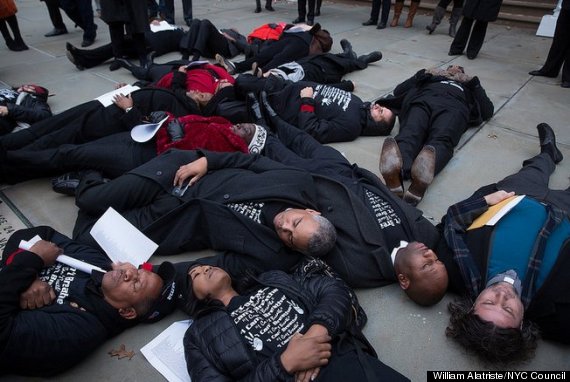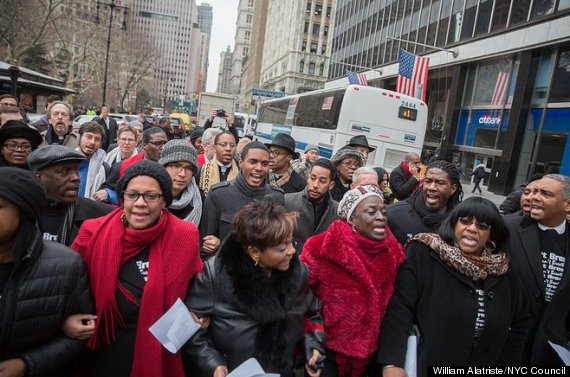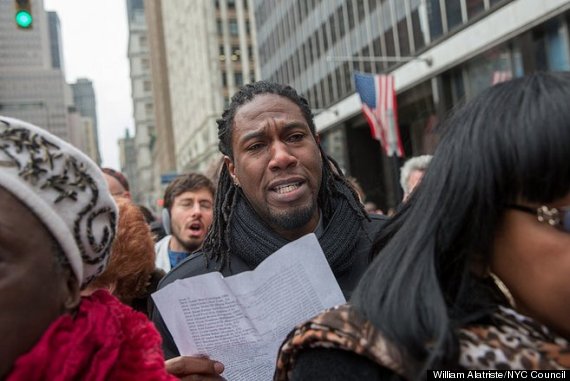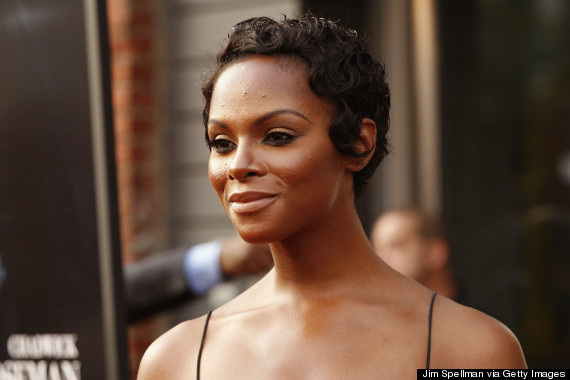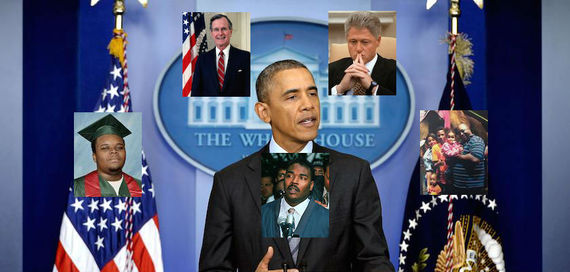
I grew up in a part of St. Louis, Missouri, just 10 minutes from the suburb of Ferguson, and spent a summer in New York while I was in law school, so the cases of Michael Brown’s shooting and Eric Garner’s chokehold have really hit home. Like so many across the country, and even around the world, I have watched intently as these tragic stories have unfolded. Moreover, as a legal analyst and commentator, I have debated these issues with some of the country’s top attorneys and experts on race relations on TV networks as diverse as Al Jazeera to MSNBC. Along with the millions of other concerned citizens and civil …
I grew up in a part of St. Louis, Missouri, just 10 minutes from the suburb of Ferguson, and spent a summer in New York while I was in law school, so the cases of Michael Brown’s shooting and Eric Garner’s chokehold have really hit home. Like so many across the country, and even around the world, I have watched intently as these tragic stories have unfolded. Moreover, as a legal analyst and commentator, I have debated these issues with some of the country’s top attorneys and experts on race relations on TV networks as diverse as Al Jazeera to MSNBC.
Along with the millions of other concerned citizens and civil rights leaders, my head shakes in disbelief and my concern deepens as our society continues to fail not only black men in the criminal justice system, but millions of men and women whose lives are deemed less valuable because of their education, income and skin color. Nonetheless, I remain hopeful. I know we can do better. But so often, in situations like these, the TV cameras and constant media coverage never capture when the real life-changing transformations occur. They are long gone by that point.
While everyone has their eyes on the U.S. Department of Justice with hopes it will launch federal civil rights actions against Darren Wilson and Daniel Pantaleo, the two police officers involved in the Brown and Garner matters, it’s actually equally important for us to focus on local politics. It’s there that the power for change lies. If we can’t create change within our own communities, we can’t expect change on a much larger scale, and the justice department, as a practical matter, can’t be expected to prosecute all the white officers that kill black men every year in this country. Change starts at home.
State legislators enact laws and county district attorneys rely on those penal codes when prosecuting police excessive force cases. Most of the cases never make international or national headlines like Brown and Garner, but they all require an application of state law. These cases are reviewed either by grand juries who determine if there is probable cause to force an officer to face a criminal trial, or by a judge who must decide in a preliminary hearing if the district attorney has presented sufficient evidence to meet the threshold for the next step in a criminal prosecution.
In the tragic instances in Ferguson and Staten Island, the penal codes relied upon were enacted years before the encounters leading to the violent use of force. Likewise, the decision to present these two high-profile cases to grand juries, which meet in secret, was made solely by local district attorneys. These top lawyers are elected officials whose only boss is the constituents who voted for them. They report to you, the voter!
Although activists and elected officials called for the county district attorney in Ferguson, Robert McCulloch, to recuse himself, or for Missouri Gov. Jay Nixon to remove McCulloch by appointing a special prosecutor to decide Wilson’s fate, neither was done. McCulloch’s record of less-than-aggressive prosecution of police did not start with Brown’s case and replacing an elected official who has no actual conflict of interest is rare and, in many ways, antithetical to the democratic process. Regrettably though, McCulloch’s reputation for rarely prosecuting law enforcement officials is no secret throughout St. Louis County.
If African-American progressive Democrats and other ethnic groups built coalitions and ran candidates in St. Louis County, I doubt Robert McCulloch would be elected or the one making the decision to present Ferguson’s most racially-charged case ever to the 12 grand jurors who ultimately decided not to indict Wilson. The mayor of Ferguson would also better reflect the residents he serves and the community he represents. And since the mayor appoints the chief of police, we can only imagine that a chief more sensitive to, and aligned with, the residents of Ferguson would not have allowed his team to leave Brown’s body lying in the street for over four hours.
In fact, if communities like Ferguson built coalitions focused on education, job creation and civic engagement, we wouldn’t even be having a conversation about community policing, which has taken on a surreal sense of urgency since the deaths of Brown and Garner. Community policing would be the norm and not the exception in places like Ferguson and throughout this nation. Imagine how different the law enforcement power structure in Ferguson would be if the 50-percent African-American constituency had a 100-percent turnout for all elections.
When we understand the inextricable link between local government and accountable policing, we can create change. Let’s begin to think beyond the protests. No doubt mobilizing people across the nation to express outrage has both historical significance and current day relevancy; but equally important is the ability to see the bigger picture, strategize and innovate for change. History has taught us that sustained activity and disciplined work that occurs beyond the cameras and high-profile criminal cases create systemic change.
I challenge my peers in the legal field, my media colleagues, my friends in elected office, the men and women I work along with in the disability community, my teenagers and young adult family members to commit to putting boots on the grounds and working for the change we want to see. Take voter registration forms to a protest; use social media to raise awareness of local candidates and issues; take a friend to their polling location; tutor an inspiring and future police chief and district attorney; and most importantly be willing to work on a daily basis to build bridges and coalitions that empower rather than destroy. Social transformation is no easy task, but neither was sending a man to the moon. And we did that. Likewise, we can do this.
Areva Martin is a nationally known civil rights advocate, attorney and on-camera legal expert and analyst. Martin is the founding partner of Martin & Martin, LLP, one of Los Angeles’s largest minority-owned law firms. She is a frequent commentator on topics related to societal issues impacting minority populations and underserved communities.
Originally from –

























